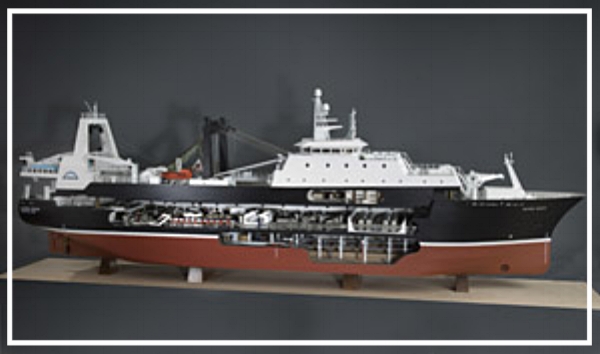Established in 1985
As partners in these robust fisheries, APA works with fishery managers, scientists, environmentalists and other industry members to ensure the continued health and sustainability of our marine resources.
The mid-water trawl Alaska pollock fishery is the nation's largest fishery. In fact, the Alaska pollock fishery is one of the largest fisheries in the world. The ability of our vessels to harvest, process, package and freeze our catch within hours of harvest allows us to produce affordable seafood products of the highest quality. The food products we produce include fillets, surimi, and fish roe. Fish meal and fish oil is produced from non-flesh parts of the fish we catch.
APA has played a leading role in finding ways to minimize fishing impacts on the environment. In the 1990s, APA members formed fish harvesting cooperatives in both the Alaska pollock and Pacific whiting fisheries. These cooperatives enable us to catch the quota using fewer vessels and to better coordinate efforts to reduce incidental catches. The Alaska pollock fishery and Pacific whiting fishery are regarded as two of the "cleanest" fisheries in the world. APA catcher/processor vessels retain and utilize 99.5% of their catch.
“The mid-water or ‘pelagic’ trawl gear used to catch Alaska pollock is highly efficient, and has a very low rate of bycatch relative to the amount of harvested pollock.””
What We've Achieved
Since the inception the PCC in 1999, it has helped reduce over capacity in the catcher/processor fleet and enabled participants to produce 50 percent more fish products on a per pound basis than the fleet produced in 1998 under an "Olympic-style," race for fish.







